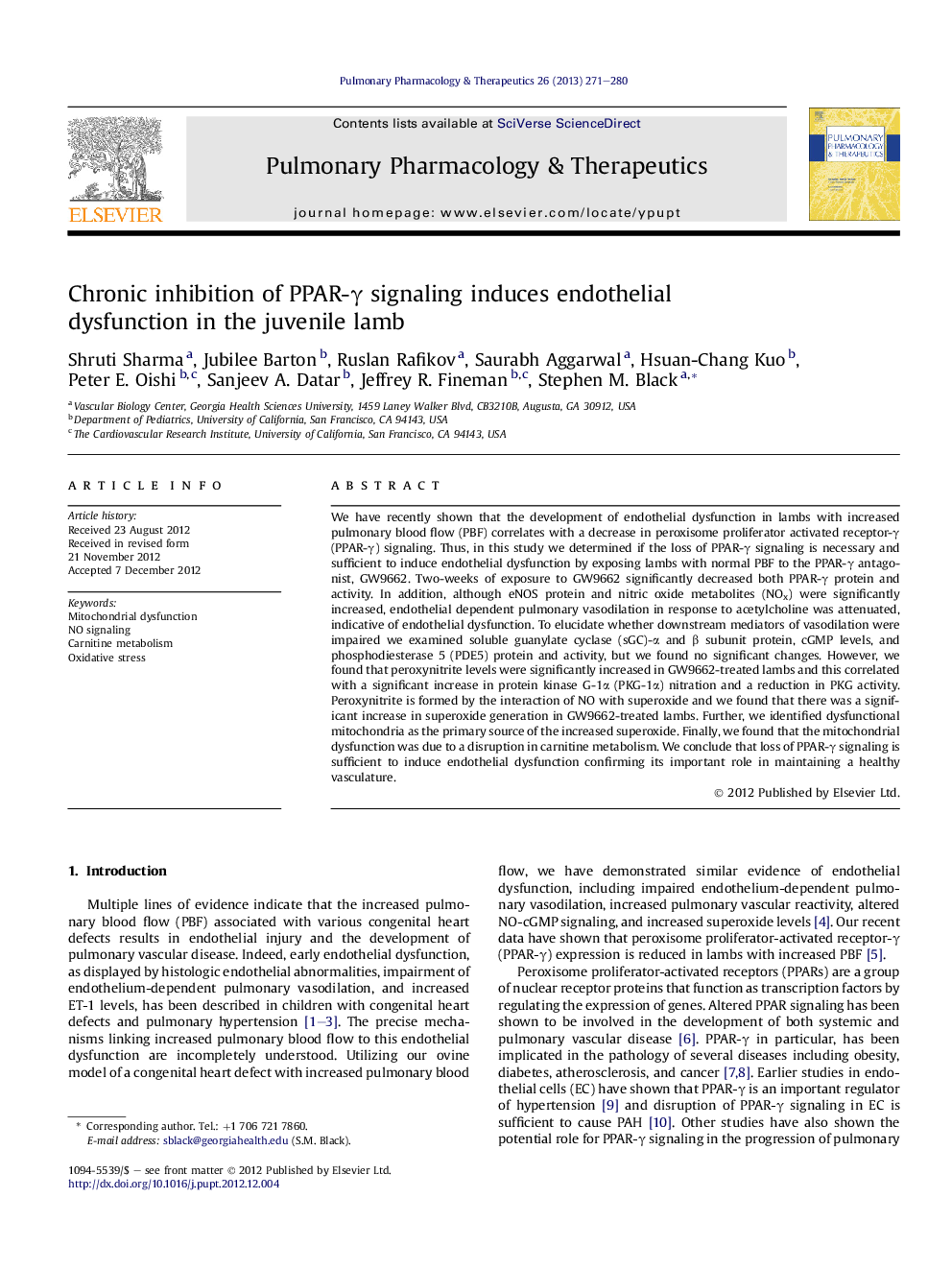| Article ID | Journal | Published Year | Pages | File Type |
|---|---|---|---|---|
| 2567049 | Pulmonary Pharmacology & Therapeutics | 2013 | 10 Pages |
We have recently shown that the development of endothelial dysfunction in lambs with increased pulmonary blood flow (PBF) correlates with a decrease in peroxisome proliferator activated receptor-γ (PPAR-γ) signaling. Thus, in this study we determined if the loss of PPAR-γ signaling is necessary and sufficient to induce endothelial dysfunction by exposing lambs with normal PBF to the PPAR-γ antagonist, GW9662. Two-weeks of exposure to GW9662 significantly decreased both PPAR-γ protein and activity. In addition, although eNOS protein and nitric oxide metabolites (NOx) were significantly increased, endothelial dependent pulmonary vasodilation in response to acetylcholine was attenuated, indicative of endothelial dysfunction. To elucidate whether downstream mediators of vasodilation were impaired we examined soluble guanylate cyclase (sGC)-α and β subunit protein, cGMP levels, and phosphodiesterase 5 (PDE5) protein and activity, but we found no significant changes. However, we found that peroxynitrite levels were significantly increased in GW9662-treated lambs and this correlated with a significant increase in protein kinase G-1α (PKG-1α) nitration and a reduction in PKG activity. Peroxynitrite is formed by the interaction of NO with superoxide and we found that there was a significant increase in superoxide generation in GW9662-treated lambs. Further, we identified dysfunctional mitochondria as the primary source of the increased superoxide. Finally, we found that the mitochondrial dysfunction was due to a disruption in carnitine metabolism. We conclude that loss of PPAR-γ signaling is sufficient to induce endothelial dysfunction confirming its important role in maintaining a healthy vasculature.
